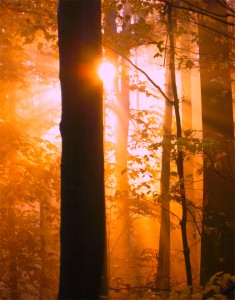By Arthur H. Gunther III
ahgunther@yahoo.com
HUDSON RIVER, N.Y. — This mighty waterway, not a western route to Asia through the Northwest Passage as Hendrick Hudson hoped it would be in 1609, but to the great port of Albany and so through canals, lakes and on land to the American frontier and all the greatness and achievement of that, remains as beautiful as the explorer found it. Once assaulted by industrial discharge, its waters are these days enjoyed by boaters and those who live in expensive housing along the shore. Visitors can view the wonderful landscape, from New York City sights to the Palisades escarpment to Hook and Bear mountains, to West Point and on to Albany, enjoying many of nature’s gifts on both the eastern and western shores.
Last week, I was privileged to take a boat ride on the Hudson from Haverstraw south to the Tappan Zee Bridge at South Nyack and back, courtesy of the Historical Society of Rockland County. I was the principal speaker on the history of the bridge, which was constructed in 1955 and which will give way to two new crossings in a few years. I offer some of that talk here for anyone interested in how a bridge was built and how that brought “progress,” not always a cherished effort.
FROM THE BOAT TRIP:
“I said at the beginning of this talk that there were two principal players in the decades-long buildup of the Tappan Zee Bridge: the “progress” people, including land speculators, and those who sought to keep Rockland semi-rural. The preservationists lost, and many of the old ways and more than 100 other homes and the South Nyack village downtown are gone. But the “progress” people did not win, either, since the great and continuing cost of hurried, barely planned development has brought drainage, traffic, infrastructure and quality-of-life problems. And now there is the “graying of Rockland,” with an older population, development homes needing renovation and not enough tax money for truly good living going forward. No one knows what the future will bring, especially with the continuing decline of the middle class. Who will step up to rebuild and reinvigorate Rockland?
Yet interstate travel, especially trucks, the real winner in the building of the Thruway and the Tappan Zee Bridge, will continue, and even a shiny new set of crossings across the Dutch sea from South Nyack to Tarrytown will not solve Rockland’s woes nor the growing traffic concerns and the utter need to rebuild the Thruway in Rockland. The new spans may well prove to be bridges “too far.”
The Tappan Zee Bridge is part of the New York State Thruway and now also belongs to the I-87, I-287 interstate network that leads upstate, to the west and to New England. It is the longest bridge in the State of New York, with total length of the crossing and approaches at 16,013 feet. The cantilever span is 1,212 feet, providing a maximum clearance of 138 feet over the water. The bridge is about 25 miles north of midtown Manhattan and is one of the primary crossings of the Hudson north of New York City. It carries much of the traffic between southern New England and points west of the Hudson.
Work on the $80 million Tappan Zee — $668 million in today’s dollars — hit peak intensity by 1953. It opened to traffic on Dec. 15, 1955, and is part of what was once called the Dwight D. Eisenhower Defense Highway network. It can be used in the event of war for materiel and troop transport.
The bridge came to be because in the later 1940s New York Gov. Thomas Dewey proposed a super highway in the German “Autobahn” style, from Suffern, at the New Jersey border, to upstate New York, to foster commerce. But it soon became apparent that the Thruway bond holders could not be paid off without a big revenue source, and so the idea of extending the road to New York City via a Hudson River crossing at South Nyack was quickly adopted, thus providing a nicely ringing “cash register.”
Trouble was that non-quality materials and a cheap design were used to construct the Tappan Zee. Since 1955, overuse has put the bridge in danger of major failure, and in October 2011, at the direction of Gov. Andrew Cuomo, the Thruway Authority and the New York State Department of Transportation jointly proposed a replacement structure, the “Tappan Zee Hudson River Crossing.” The two new spans, which will include pedestrian and biking lanes and lookouts for viewers, are now being constructed.
The “progress” legacy of the first crossing has not proven as grand as first advertised, since rapid suburban growth overtaxed local planners, zoners and the infrastructure. The new crossings will bring even more interstate travelers through geographically small Rockland, and there seems no benefit to them. The interstate network will still have major flaws in the lower Hudson Valley region, and though a poorly planned and built 1955 crossing will be replaced by wonderfully engineered safe structures, they will still connect to ill-advised interstates on both sides of the Hudson.
The first Tappan Zee was built as a “cash register,” not as a well-planned conduit for progress.” It will transfer that legacy to the new spans.
The writer is a retired newspaperman who can be reached at ahgunther@yahoo.com This essay may be reproduced.

